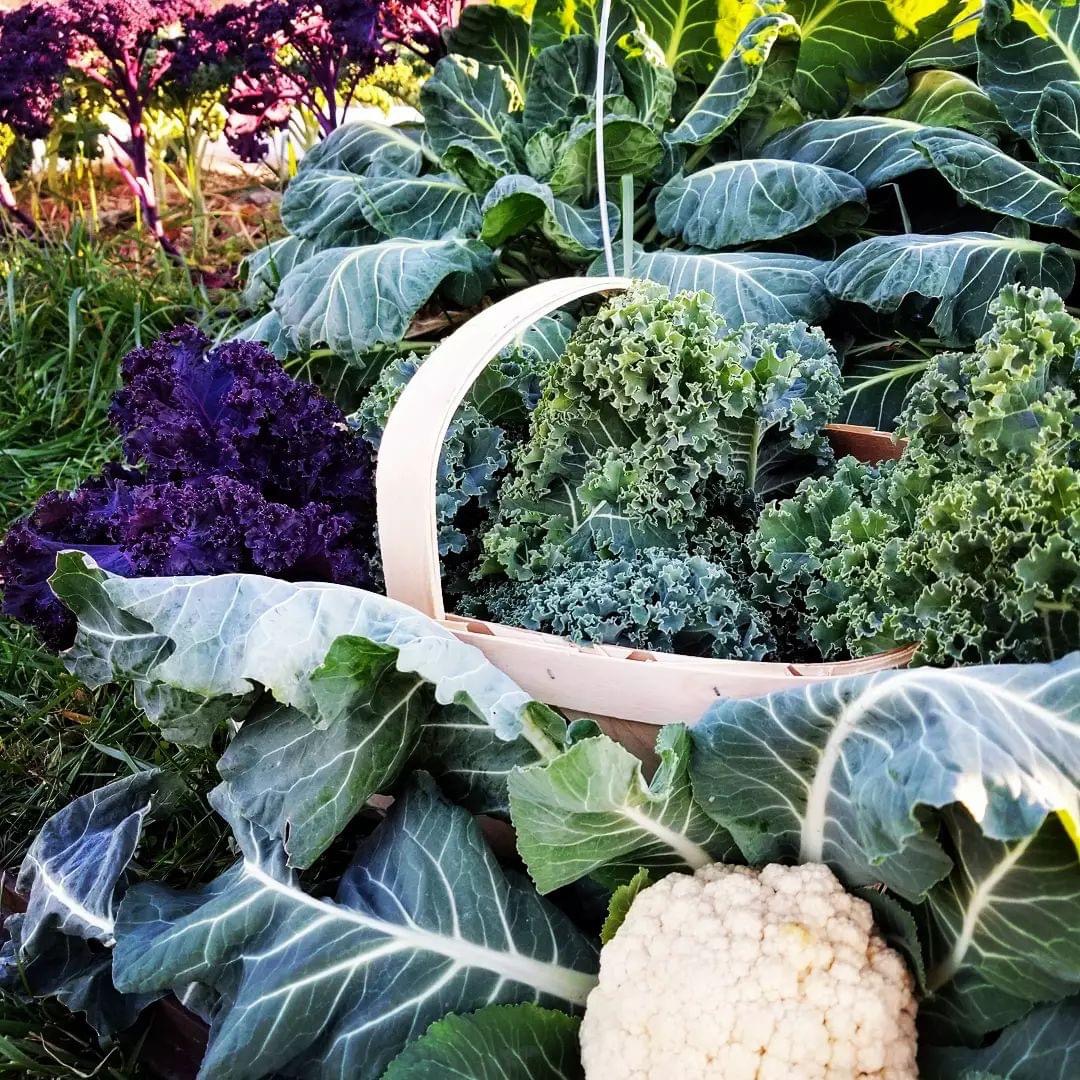Why You Want to Plant a Fall Garden!
Fall gardening is amazing! 2021 was our first year having a fall garden and we loved the results. We are on the border of zones 6b and 7a and were harvesting vegetables through the winter. In the first week of December, we were eating cauliflower, kale, turnips and radishes. What is great about fall gardening is not needing to water, minimal weed growth, and minimal pests. We do have a low tunnel to shield the plants from the colder temperatures. However, it can get too warm inside of it, so we are having to constantly watch the predicted high and low temperatures to evaluate if we need to vent it or close it off. As this is our first year, we’ve learned a few things:

- Fall gardening means harvesting in the fall, not planting in the fall. Many seedlings and seeds need to be planted in August. For example, I planted my peas in mid to late September and the peas weren’t able to fully form before they froze. I should have planted them a month sooner.
- Sun angles change! I have a garden on the north side of the house. In the summer, parts of it got just enough sun for most of the plants to produce. Now that the sun angle has changed, this garden is completely shaded and all of the plants there are stunted.
Using Row Covers for a Fall Garden
Row covers, or low tunnels, are a popular choice for protecting cool weather crops from temperature dips, thereby extending the growing season. Most of the plants in a fall garden are frost tolerant and some are even freeze tolerant. However, when the temperatures dip below 20, the plants will no longer be able to thrive. While I placed row covers on my fall garden the first weekend of November, I didn’t need to close the vents until a few weeks later. Cool weather crops can actually get too warm under a row cover. It is recommended you lift the ends to vent it when the temperatures are above 45 degrees Fahrenheit.
Before covering my fall garden, I let the first frost kiss the kale as it’s supposed to improve kale’s taste. Once this had happened, I prepped the garden before covering it.


First, I harvested the radishes that were interplanted with kohlrabi.


Then I applied compost as mulch to the leeks, spinach, and radishes. (After growing our first set of leeks this summer, I learned that leeks should be hilled to create more of the white portion).


Finally, the row was ready to be covered! I left the ends clamped up to continue venting it until the temperatures dropped below freezing.

February Update
At this point in winter, we have had lows in the teens to single digits. Everything that was not under the row cover has frozen. We harvested all of the broccoli and cauliflower in December. The first week of February I was able to harvest 4 pounds of vegetables: turnips, kale, and spinach. Brussels sprouts, kale, kohlrabi, leeks, and spinach are still growing. However, we are beginning to have a vole problem. They have uprooted half of the kale, munched on some turnips, and are the likely cause for the missing parsnips. Despite this pest, I am still thrilled to be harvesting fresh vegetables for our family in February.

